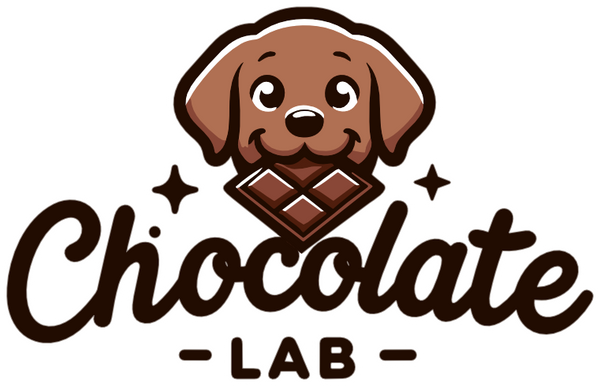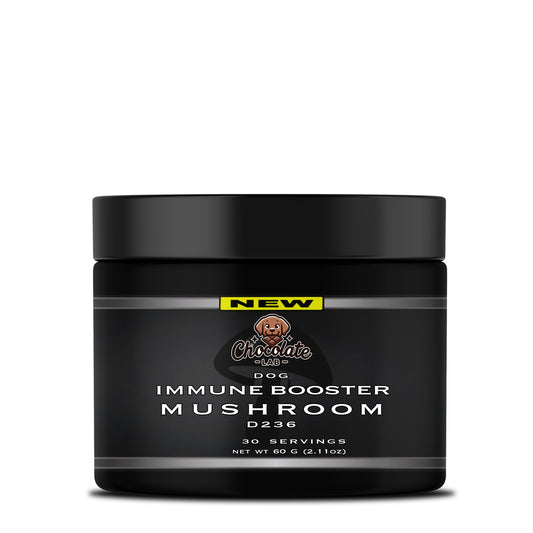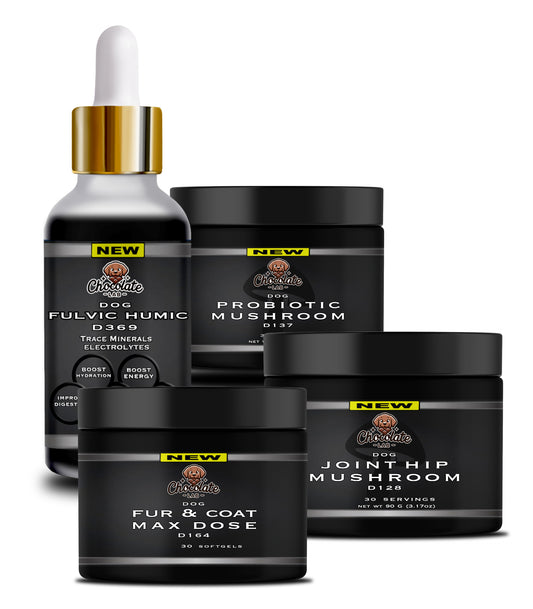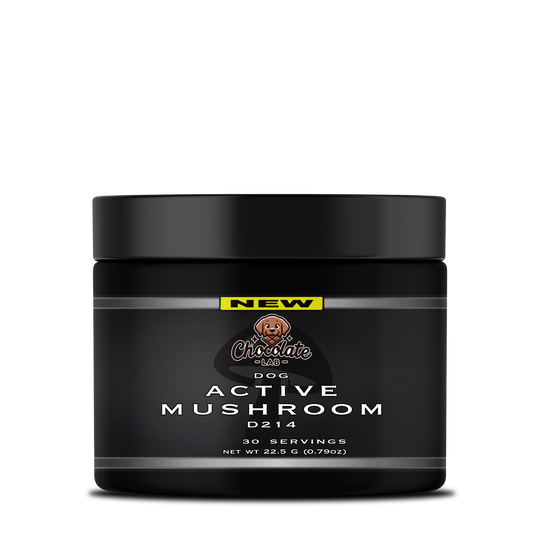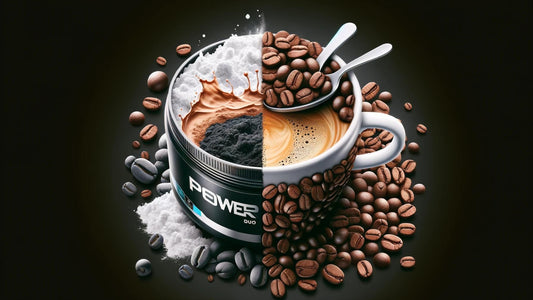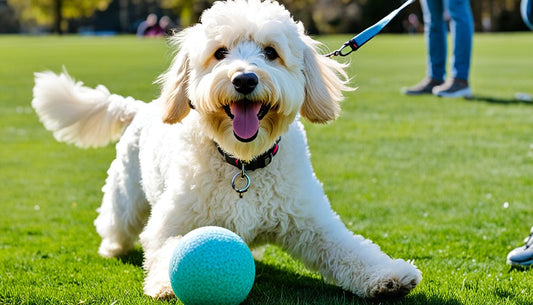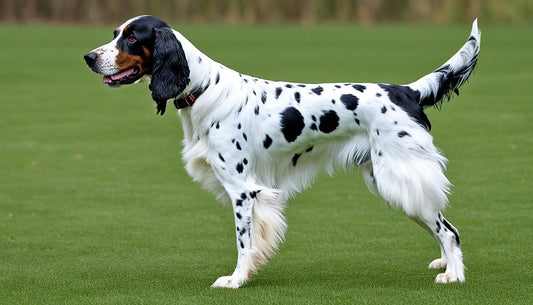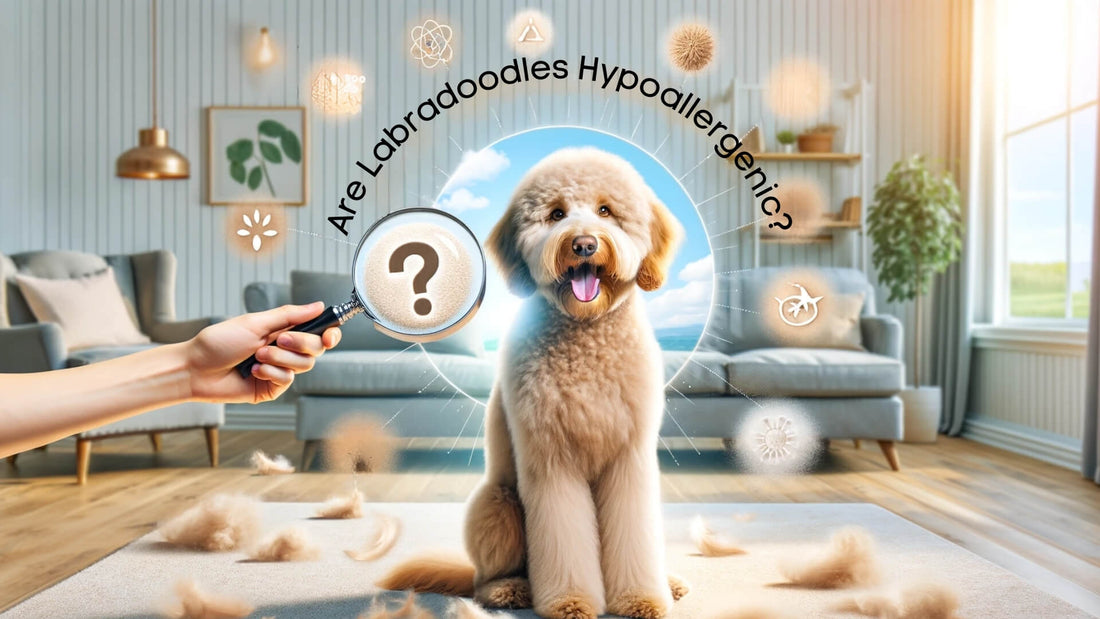
Are Labradoodles Truly Hypoallergenic? The Facts About Their Coats
Labradoodle Hypoallergenic Myth: Uncovering the Truth About Their Coats
Published on
Updated on
Key Takeaways: Are Labradoodles Hypoallergenic?
| Key Takeaway | Description |
|---|---|
| Labradoodles and Allergies | Labradoodles are often marketed as hypoallergenic, but they are not truly hypoallergenic; their allergenicity varies among individual dogs. |
| Allergen Sources | Allergens in Labradoodles come from skin flakes, saliva, and urine, making it impossible for them to be 100% hypoallergenic. |
| Fur Types Matter | Labradoodles with wool-like or curly coats may produce fewer allergens compared to those with straight coats. |
| Allergic Reactions Possible | Allergic reactions are possible in individuals with allergies when exposed to Labradoodles. |
| Allergy Testing | Individuals with allergies should spend time with a Labradoodle before committing to ensure compatibility. |
| Regular Grooming | Regular grooming and cleaning can help reduce allergen levels and minimize allergic reactions. |
| Consult an Allergist | Consultation with an allergist can help determine if a Labradoodle is a suitable choice for allergy sufferers. |
| No Guarantees | While Labradoodles can be a better option for some allergy sufferers, there are no guarantees of complete hypoallergenicity. |
| Individual Variability | Allergy reactions vary among individuals, and what triggers allergies can differ from one person to another. |
Table of Contents 📝
- Labradoodles' Hypoallergenic Status: What You Need to Know
- Labradoodle Origins and Their Impact on Allergies
- Understanding Allergies to Labradoodles: Symptoms and Solutions
- Labradoodle Coat Types and Allergen Production
- The Truth About Labradoodles' Hypoallergenic Qualities
- Labradoodle Generations and Their Allergenic Traits
- Benefits and Challenges of Living with a Labradoodle Allergy
- Practical Tips for an Allergy-Friendly Life with Labradoodles
- The Emotional Connection: Labradoodles and Their Owners
- Advanced Care for Labradoodles and Allergen Control
- Labradoodles: Pros, Cons, and Alternatives
- Frequently Asked Questions (FAQs) about Labradoodle Allergies
Labradoodles' Hypoallergenic Status: What You Need to Know
A. Definition of Hypoallergenic
Welcome to the deep dive of a question that has befuddled many potential dog owners: are Labradoodles hypoallergenic? Let's start with the basics. "Hypoallergenic" is a term that often floats around in conversations about pets, especially dogs. It implies that the animal is less likely to cause an allergic reaction compared to other breeds. But what does it mean in the context of our cuddly Labradoodles? 🐶

B. Importance of the Topic for Potential Pet Owners
If you've ever had a sneezing fit or itchy eyes around dogs, you know how critical this topic is. An allergy-friendly pooch not only means comfort for you but also a better bonding experience with your furry friend. The hypoallergenic question is particularly significant for families with kids or elderly people who are more susceptible to allergies.
Quick Tip: If you're worried about potential allergic reactions, make sure to spend some time with a Labradoodle before making your final decision. 🌟
Product Recommendation
Allergic reactions can be tough on both humans and pets. Our mushroom probiotic is designed to enhance your dog's gut health, which can indirectly help in reducing allergic symptoms.
Labradoodle Origins and Their Impact on Allergies
A. Origin of Labradoodles
1. Purpose of Breeding
Ah, the Labradoodle, that lovable mix between a Labrador Retriever and a Poodle! But did you know that this breed was not merely a whimsical creation? It was intentionally bred in the late 1980s to be a hypoallergenic guide dog. Yes, you read that right—are Labradoodles hypoallergenic was a question even at the dawn of their breed history!
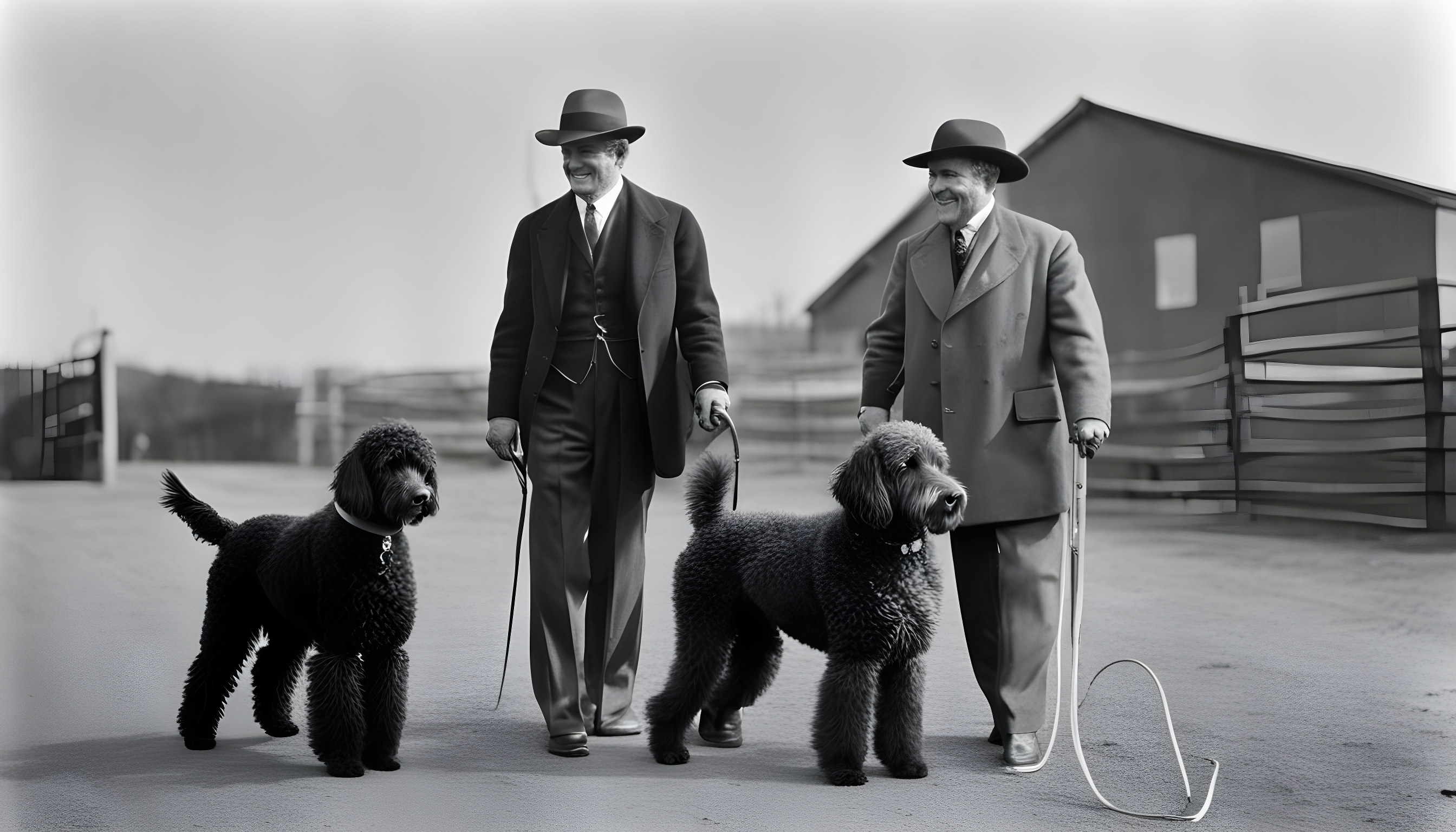
2. Parent Breeds (Labrador Retriever and Poodle)
The Labradoodle is a happy blend of two iconic breeds. The Labrador Retriever brings its friendly nature and keen intelligence, while the Poodle contributes its hypoallergenic coat and sharp wit.
B. General Characteristics of Labradoodles
1. Temperament
If you've ever met a Labradoodle, you know they're generally easy-going, friendly, and full of life. They are excellent with children, making them ideal family pets.
2. Size and Appearance
Labradoodles come in various sizes, primarily depending on their parentage. Generally, they can weigh between 50 to 65 pounds and stand about 21 to 24 inches tall.
3. Coat Types
Here's where things get interesting. Labradoodles have three primary types of coats: wool, fleece, and hair. This variety in coat types plays a massive role in their hypoallergenic status. But more on that later!
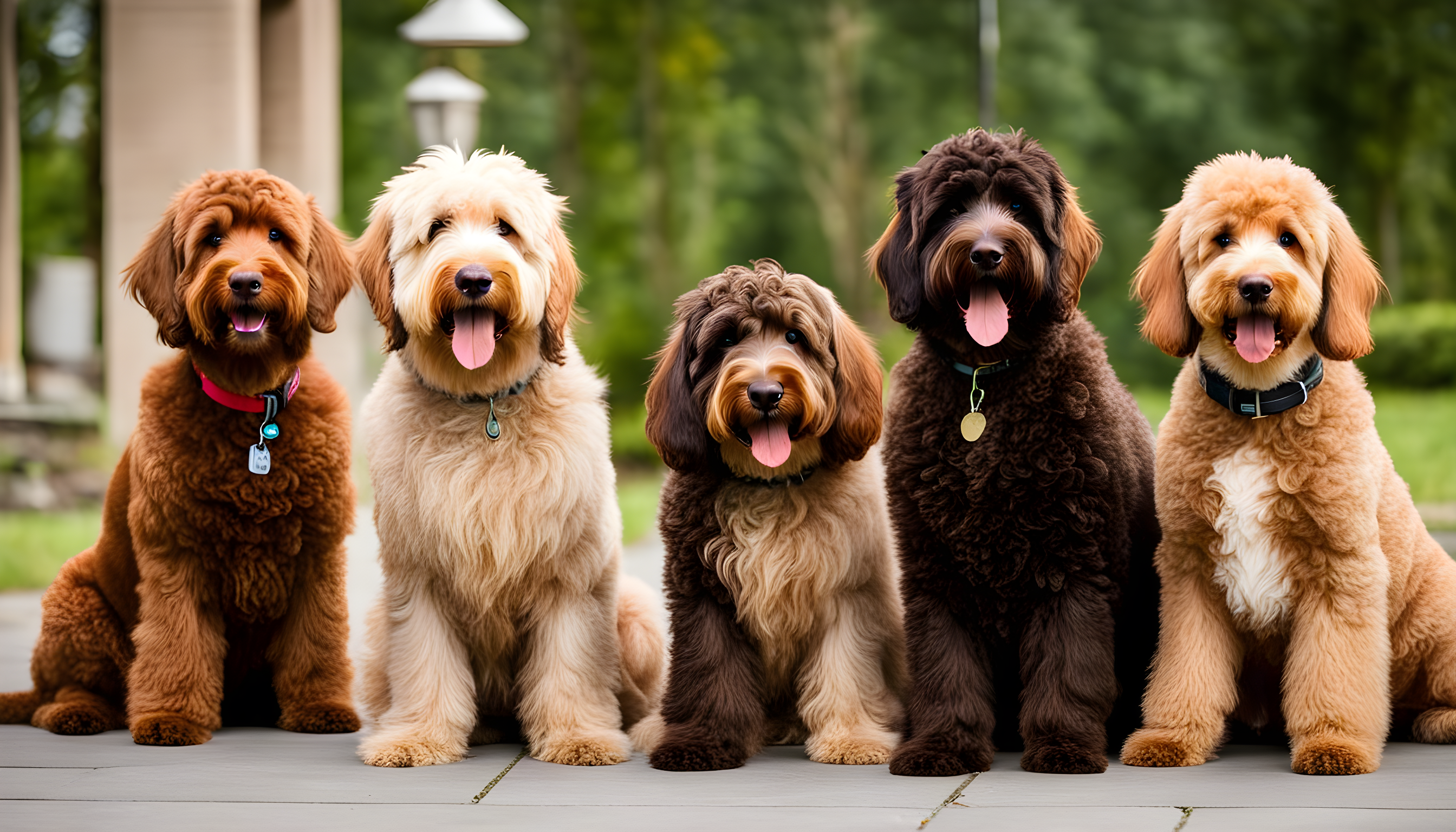
Related Blogs
If you're curious to know more about this fascinating breed, don't forget to check out our blog on What is a Labradoodle.
Points to Ponder 🤔
- Labradoodles were intentionally bred to be hypoallergenic.
- They are a mix of Labrador Retriever and Poodle, each bringing its unique characteristics.
- Labradoodles have various coat types, affecting their hypoallergenic status.
Stay tuned as we delve deeper into the nitty-gritty of allergies and how Labradoodles measure up in the hypoallergenic department.
This concludes the first of our eight-part series on the hypoallergenic status of Labradoodles. Keep your eyes peeled for the next installment, where we will explore in detail the nature of dog allergies and how Labradoodles might be your sneeze-free companion. 🐾
Understanding Allergies to Labradoodles: Symptoms and Solutions
A. Common Allergens from Dogs: The Unseen Offenders
Let's get real—nobody signs up for a lifetime of sniffles when they bring home a pup. So what's causing all the commotion? Most people think fur is the issue, but in reality, the main culprits are microscopic: dander, saliva, and yes, even urine. These allergens are like tiny ninjas infiltrating your airways. 🐾
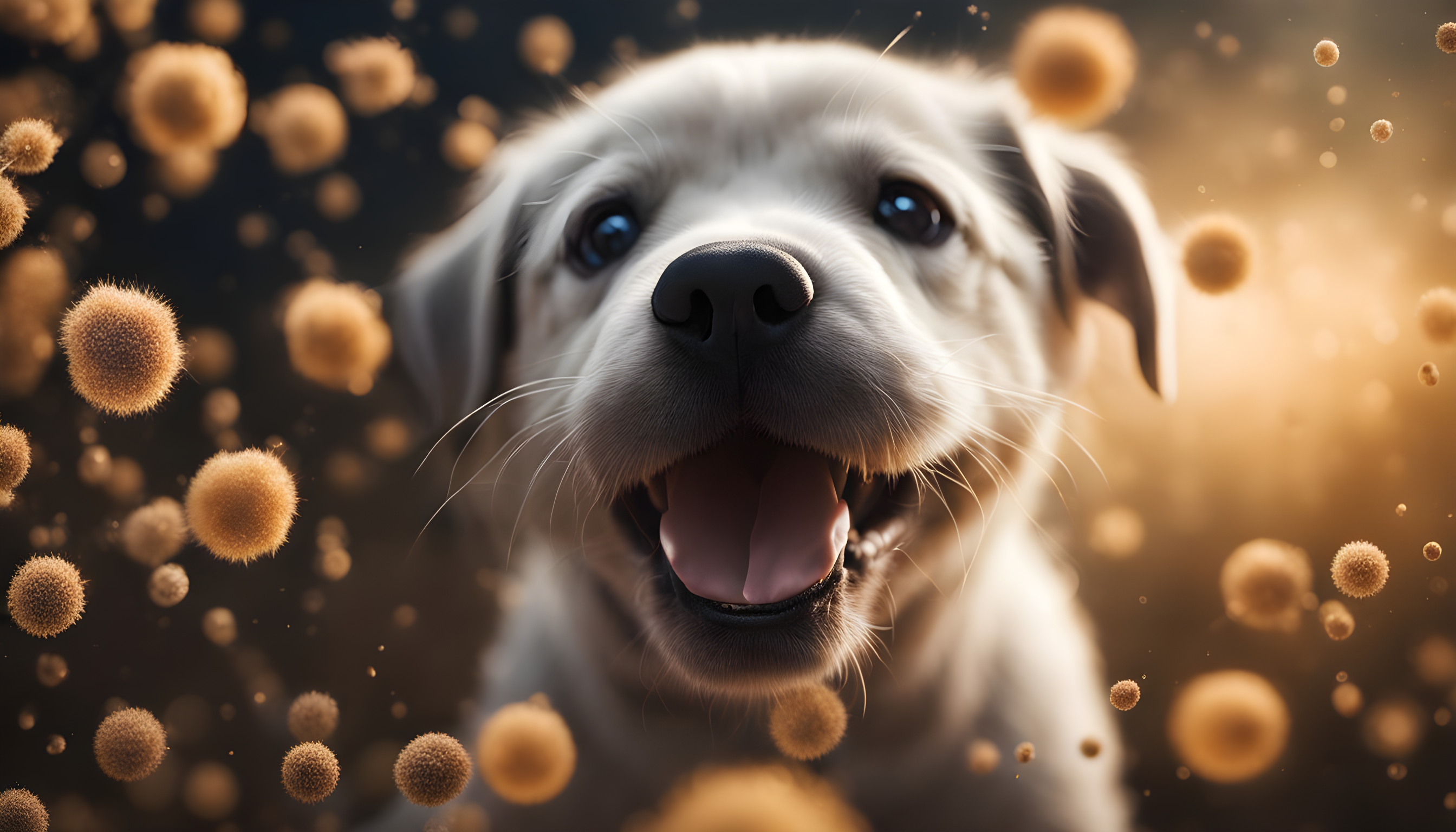
B. Impact of Dog Allergens on Humans: From Mild to "Oh, My Eyes!"
1. Symptoms of Allergies
So, you've met your dream dog, but suddenly your eyes are watering like it's the end of a rom-com. Symptoms can vary from the occasional "Achoo!" to a full-blown, "I can't breathe" asthma attack. It's not a one-size-fits-all scenario, folks.
2. Population Affected: You're Not Alone!
Believe it or not, between 10-20% of people have some sort of pet allergy. So, if you're reading this while clutching a tissue, know that you're part of a rather large club. 🤧
C. Mitigating Exposure to Allergens: The Battle Plan
1. Frequent Cleaning: Your New Best Friend
If you thought you could slack off on cleaning, think again. Regular vacuuming, and I mean getting into those corners and under the furniture, can be a game-changer. Dusting isn't just for show; it helps remove those pesky allergens lurking on your surfaces.
2. Grooming Practices: Spa Day, Anyone?
And let's not forget about grooming. A clean dog is a less sneeze-inducing dog. From baths to brushing, keeping your pup pristine can make a world of difference in your air quality.
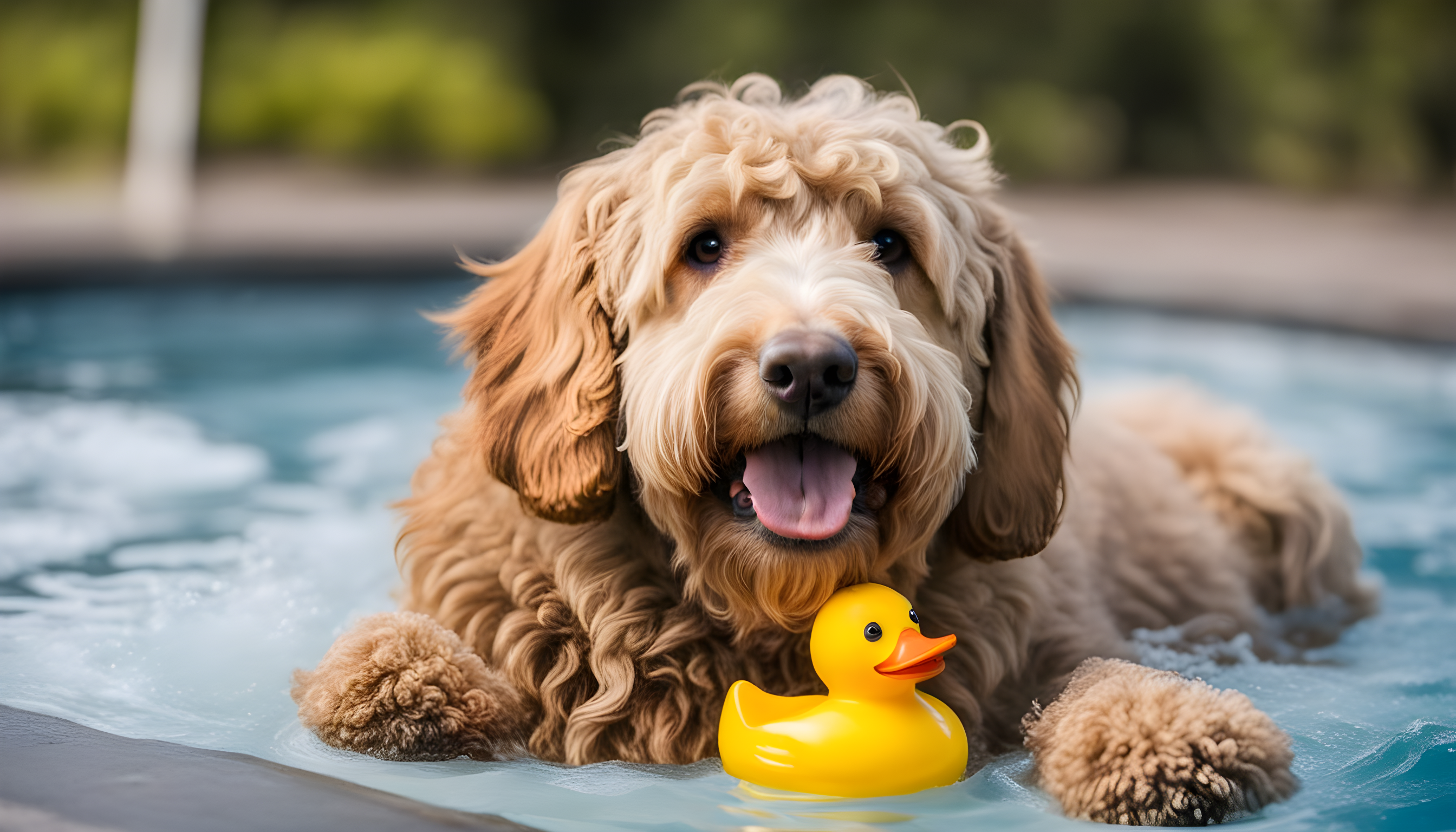
Quick Tip 🌟
Who says cleaning can't be fun? Turn on some tunes and make it a cleaning party. Your nose will thank you later!
Product Recommendation
If you're in this for the long haul, our Fur Coat Dog Supplement is the secret sauce. It's designed to keep that coat lush and dander to a minimum. It's like a spa day, but in a bottle!
Points to Ponder 🤔
- Dander, not just fur, is a leading cause of allergies.
- Regular cleaning and grooming are not optional; they're your allergy-fighting superheroes.
Related Blogs
For those who are down the Labradoodle rabbit hole and loving it, our blog Do Labradoodles Shed is a must-read. Get the lowdown on how much of a fuzzball your potential new family member could be.
So there you have it—a quick crash course on why Fido might be making you sneeze. But the question still remains: are Labradoodles hypoallergenic? Well, hold onto your lint rollers; we're diving into that next! 🐾
Labradoodle Coat Types and Allergen Production
A. Coat Types and Allergen Production: It’s Not Just Fur Deep!
One of the most fascinating aspects of Labradoodles is their myriad of coat types. Yes, we’re talking about their luscious locks! Labradoodles come in three main types of coats—each with its own "allergenic personality," so to speak.
1. Wool Coat: The Curly Suitor
Imagine a sheep decided to have a day out with your Labradoodle. What you'd get is a wool coat—tight curls and all. This coat type is the closest to a Poodle's and is generally considered the most hypoallergenic.
2. Fleece Coat: Soft Curls for Days
Next up is the fleece coat. Imagine your favorite cozy blanket turned into a dog coat—that’s what a fleece coat feels like. It’s more relaxed than the wool coat but still offers a good degree of hypoallergenic properties.
3. Hair Coat: The Wild Card
Finally, the hair coat is what you’d call the “traditional” dog coat. While lovely and soft, it’s often the least hypoallergenic of the bunch.
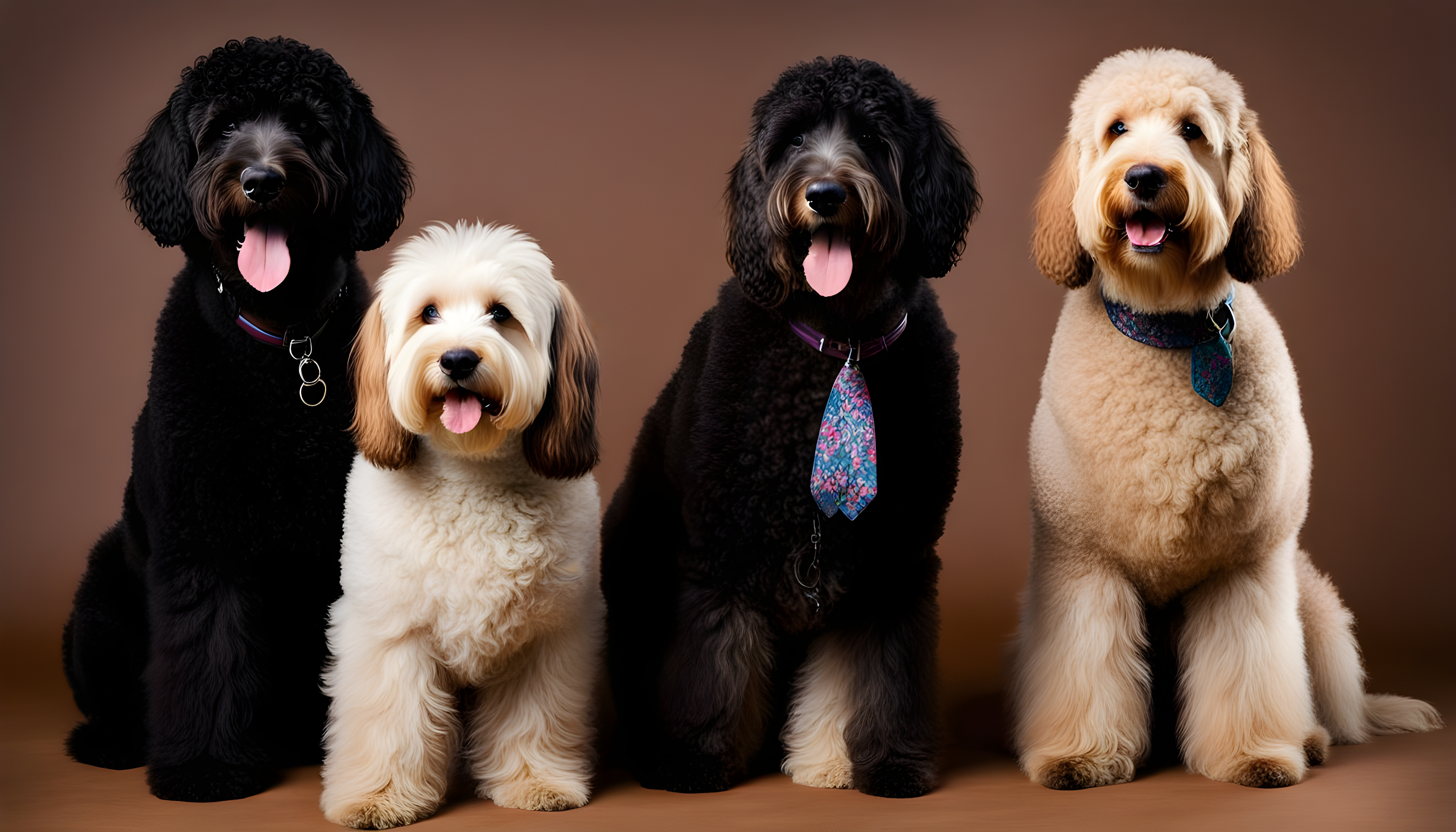
B. Shedding and Dander Release: The Tumbleweeds of Allergens
Let’s be clear: all dogs shed. Yes, even the so-called hypoallergenic ones. The real question is, how much? Generally speaking, Labradoodles with wool or fleece coats shed less and, therefore, release less dander into your home.
C. Grooming Requirements and Allergen Control: More Than Just Doggie Spa Days
1. Bathing: Not Just a Splash in the Tub
Frequent baths can help minimize dander and other allergens, but not too frequent—you don't want to dry out their skin. A nice oatmeal doggie shampoo can do wonders.
2. Brushing: The Art of De-fluffing
Regular brushing is not just for keeping your Labradoodle looking like a canine model; it also helps remove loose fur and dander, which can be allergen central.
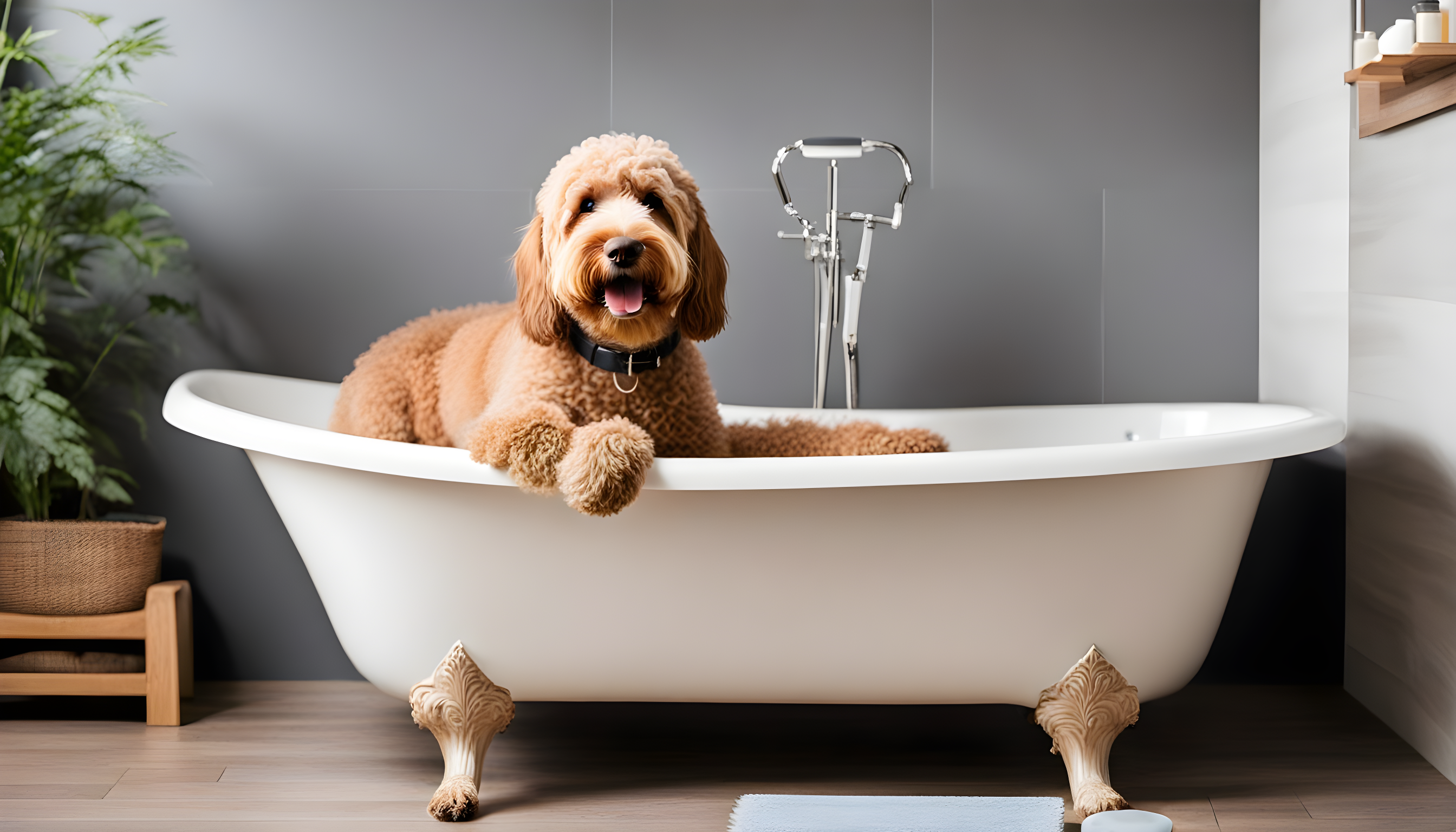
Quick Tip 🌟
Invest in a high-quality dog brush designed for your Labradoodle's specific coat type. Your nose—and your vacuum cleaner—will thank you!
Product Recommendation
In your quest for an allergy-friendly home, consider adding our Maintenance Dog Mushroom Bundle to your Labradoodle’s diet. It aids in digestion, and a healthier gut can mean a healthier coat.
Points to Ponder 🤔
- The type of coat your Labradoodle has can significantly impact its hypoallergenic status.
- Regular grooming practices are your best defense against a house full of allergens.
Related Blogs
If you’re a grooming enthusiast or just plain curious, our blog post How Long Do Labradoodles Live touches on the importance of grooming for your Labradoodle's overall health and longevity.
So, are we any closer to answering the big question: are Labradoodles hypoallergenic? Well, we're getting there, so stick around as we dig even deeper into the realities and myths surrounding hypoallergenic dogs. 🐾
The Truth About Labradoodles' Hypoallergenic Qualities
A. Hypoallergenic Versus Allergy Friendly: A Rose by Any Other Name?
So, you see the term "hypoallergenic" and think, "Aha! That's the dog for me!" But wait, pump the brakes! The term is a bit of a misnomer. No dog is 100% hypoallergenic. Some breeds are simply less likely to cause allergies—let's call them "allergy-friendly" instead.
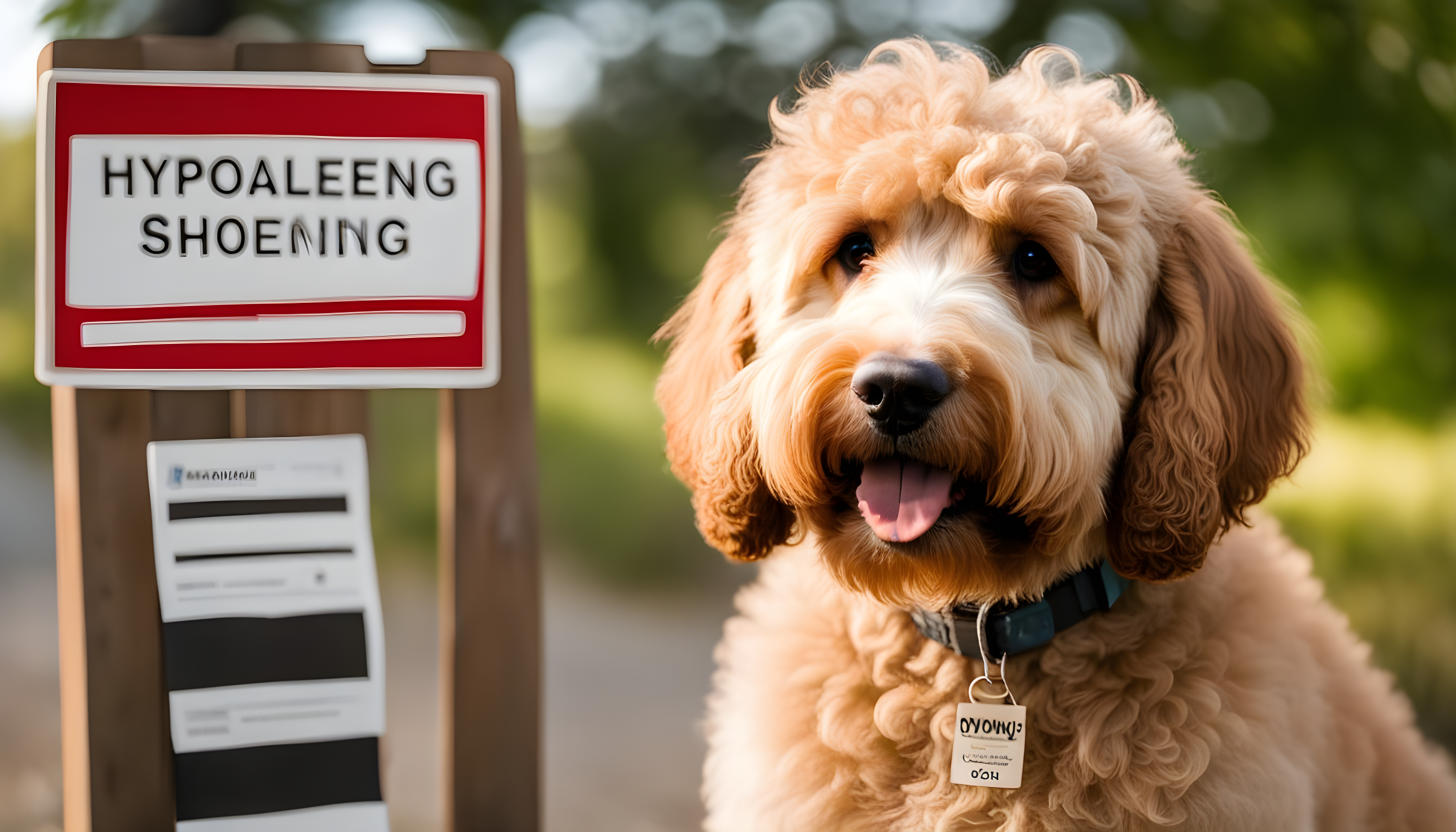
B. Reality Behind the "Hypoallergenic" Label: Don't Believe the Hype
Marketing can be deceiving, folks. Just because something is labeled as "hypoallergenic" doesn't mean it's a one-size-fits-all solution. It's crucial to dig deeper than labels and understand what actually makes a dog hypoallergenic. The real deal is how much and what types of allergens a dog produces, not some magic hypoallergenic aura.
C. Labradoodle Allergies Reality Check: Not All Doodles Are Created Equal
Remember those different coat types we talked about? Here's where they come into play. While a wool-coated Labradoodle may be more hypoallergenic, a Labradoodle with a hair coat may leave you reaching for the antihistamines. So, the short answer to are Labradoodles hypoallergenic is: it depends.
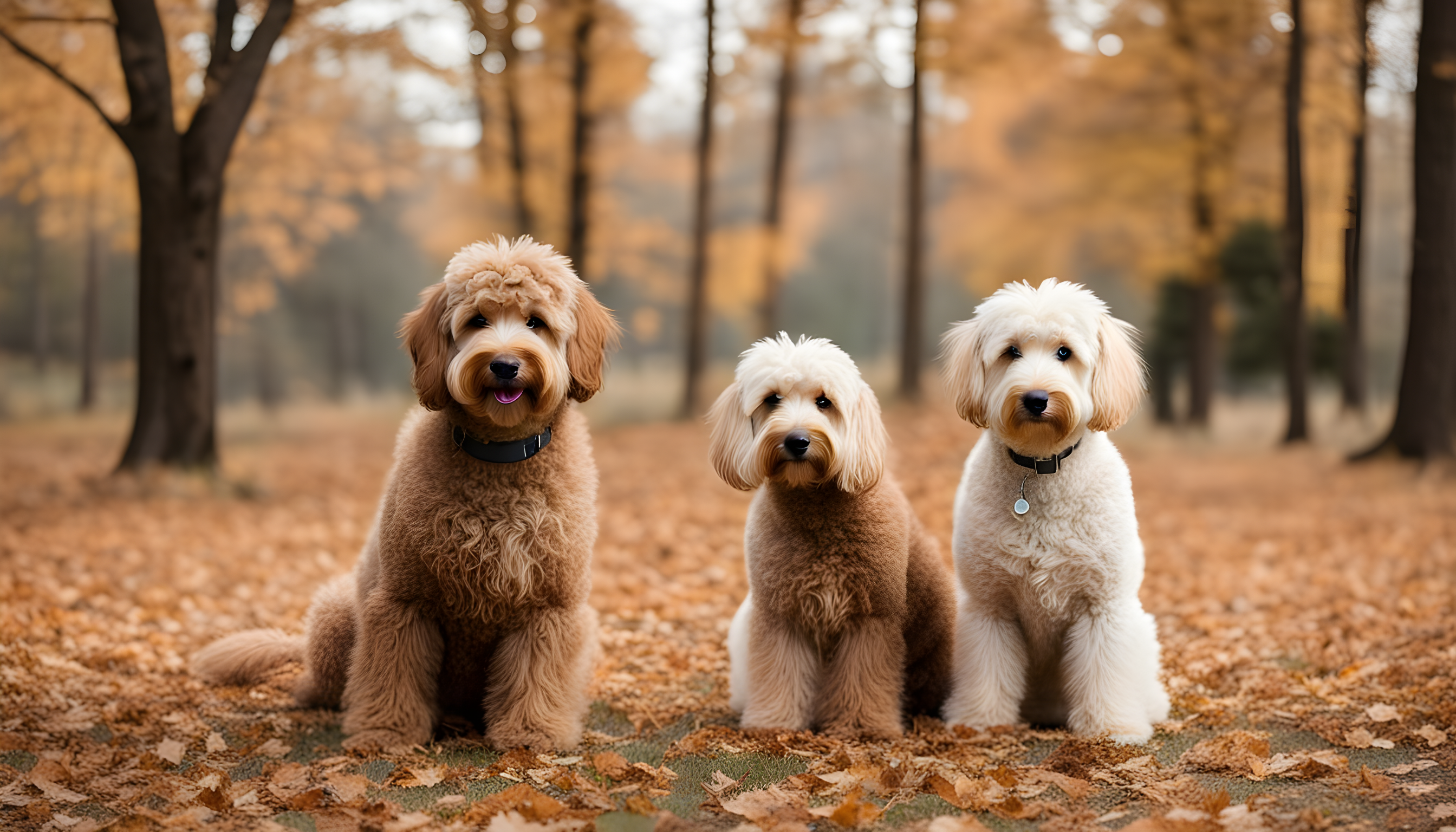
Quick Tip 🌟
If allergies are a concern, spend some quality time with the specific Labradoodle you're considering adopting. A few hours can give you a good idea of how you'll react.
Product Recommendation
Even the most hypoallergenic dog can cause some level of discomfort. For an added layer of protection, consider our dog sleep aid to ease your pet's stress, which can sometimes exacerbate allergen production.
Points to Ponder 🤔
- Hypoallergenic doesn't mean allergen-free.
- The type of Labradoodle coat can be a make-or-break factor in your quest for an allergy-friendly pet.
Related Blogs
If you've been nodding along with this section, you'll definitely want to check out our blog How Much Does a Labradoodle Cost for a deeper dive into this topic.
Alright, you've been fed a lot of information, but stick with me. Next, we'll look at Labradoodle types and generations to see which might just be your perfect, sniffle-free match! 🐾
Labradoodle Generations and Their Allergenic Traits
A. Definitions and Characteristics: The ABCs of Labradoodle Genetics
When it comes to Labradoodles, not all are created equal—especially in the hypoallergenic department. It's like a genetic lottery, and the ticket you pull could be an F1, F1B, or even an F2 Labradoodle. Confused? Let's decode these terms.
1. F1 Labradoodle (1st Generation): The OG Mix
An F1 Labradoodle is the offspring of a Poodle and a Labrador Retriever. This is the original mix, and while adorable, it's a bit of a wild card in the hypoallergenic game.
2. F1B Labradoodle (2nd Generation): Hypoallergenic MVP
An F1B Labradoodle is bred from an F1 Labradoodle and a Poodle. This mix generally has a higher chance of being hypoallergenic, thanks to that extra dose of Poodle genes.
3. F2 Labradoodle (3rd Generation): It’s Complicated
An F2 is bred from two F1 Labradoodles. This one's like the mystery box of the Labradoodle world—traits can vary widely, including how hypoallergenic they are.

B. Which Type is Best for Allergies?: The Hypoallergenic Showdown
If are Labradoodles hypoallergenic is your burning question, then you might want to lean towards an F1B Labradoodle. They often have more Poodle-like coats, which are generally better for allergy sufferers.
C. Comparisons in Terms of Allergen Production: A Tale of Three Coats
As you might guess, the F1B Labradoodles typically produce fewer allergens, thanks to their Poodle-rich heritage. F1s and F2s can be hit or miss, so if you’re sensitive, these might be riskier options.

Quick Tip 🌟
If allergies are a big concern, an F1B Labradoodle with a wool or fleece coat is your best bet. The odds are more in your favor.
Product Recommendation
Whichever generation you choose, our
can be a boon for your dog's overall health, indirectly affecting allergen production.Points to Ponder 🤔
- The Labradoodle generation you choose can have a significant impact on allergen levels in your home.
- F1B Labradoodles with wool or fleece coats are often the safest bet for allergy sufferers.
Related Blogs
Ready to go down the Labradoodle rabbit hole even further? Check out When Do Labradoodles Stop Growing to understand how size can also impact allergens.
Alright, armed with this genetic guidebook, you’re now better equipped to choose a Labradoodle that won’t have you reaching for the tissues. But wait, there's more! Up next, we'll explore the general benefits and challenges of owning a Labradoodle. 🐾
Benefits and Challenges of Living with a Labradoodle Allergy
A. Benefits: Not Just a Pretty Face
Owning a Labradoodle comes with a list of benefits as long as a dog's love for fetch. Let's break it down:
1. Allergy Aspects: The Feather in Their Cap
You've already got the download on how Labradoodles can be a breath of fresh air—literally—for allergy sufferers. Especially if you choose wisely based on coat and generation.
2. Trainability: The Einstein of the Dog World
These pups are whip-smart, thanks to their Poodle heritage. They pick up on commands faster than you can say, "Sit, Fido!"
3. Emotional and Social Benefits: Your Furry Therapist
Labradoodles are often used as therapy and service dogs. Their friendly disposition and keen intelligence make them a joy to be around.
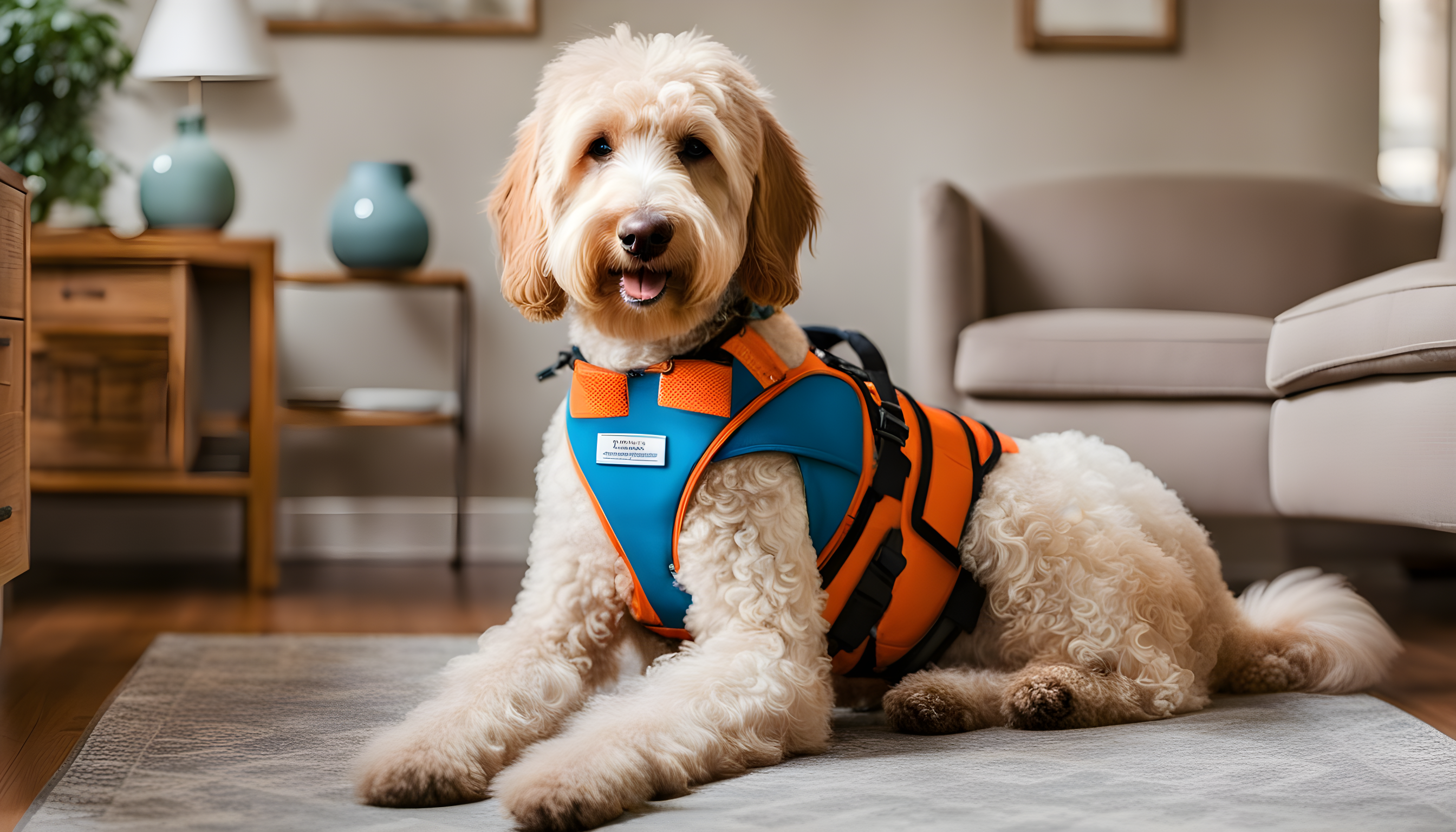
B. Challenges: Every Rose Has Its Thorns
Before you jump on the Labradoodle love train, there are a few challenges to consider:
1. Allergies and Hypoallergenic Controversy: The Gray Area
You've been armed with the facts, but it's crucial to remember that are Labradoodles hypoallergenic doesn't have a straightforward yes or no answer.
2. Maintenance and Grooming: Not for the Lazy Pet Parent
Especially if you're going for the more hypoallergenic wool or fleece coats, get ready for regular grooming sessions that rival a human hair salon.
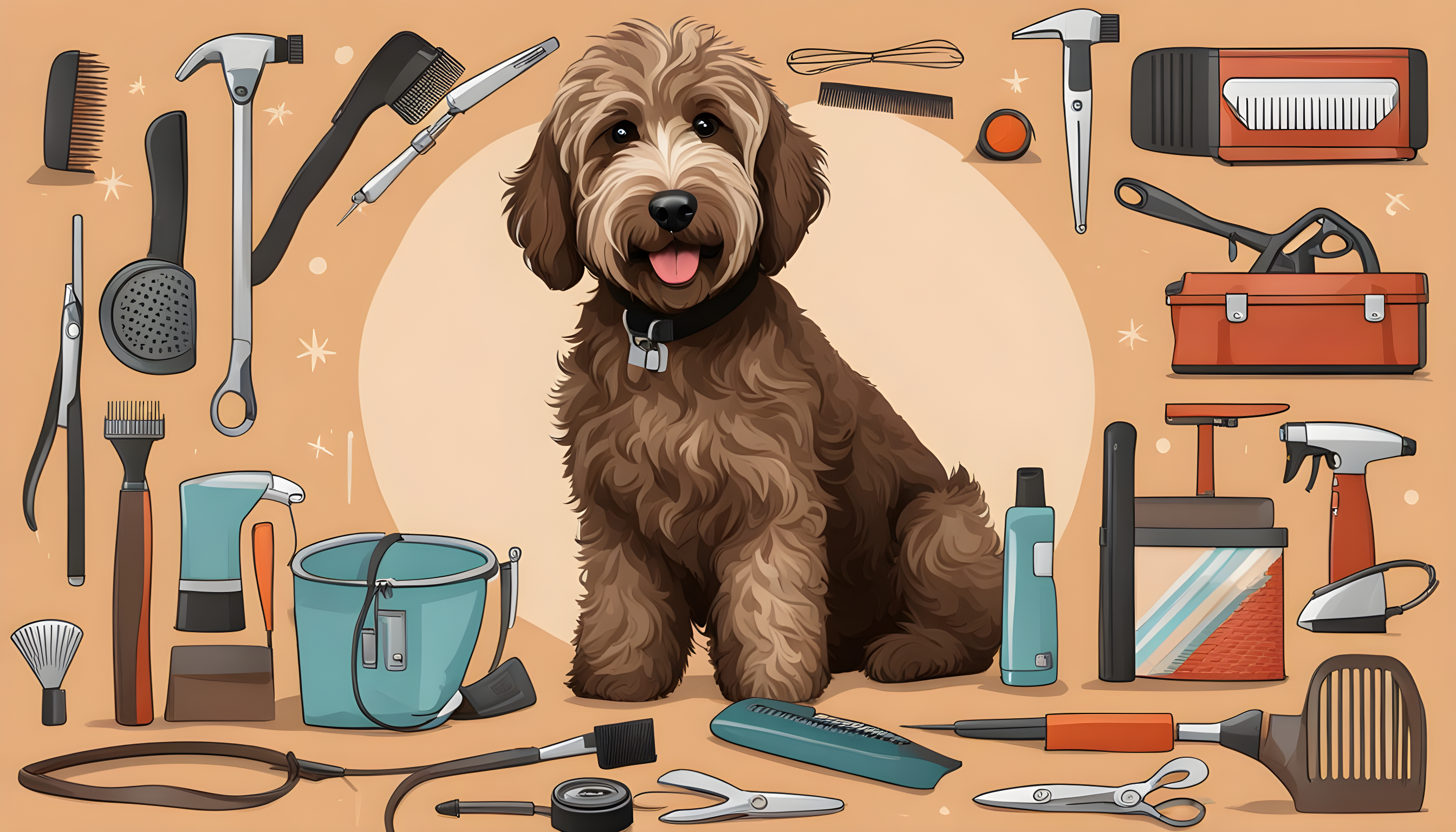
Quick Tip 🌟
If you're going for a Labradoodle, make sure you're up for the commitment it takes to keep them well-groomed and healthy. It's more than just cuddles and cute Instagram posts!
Product Recommendation
To make your life a tad easier when it comes to grooming, consider our Fulvic Humic Dog. A healthy gut can lead to healthier skin and a more manageable coat.
Points to Ponder 🤔
- Labradoodles offer a host of benefits but aren't free of challenges.
- An informed choice based on your lifestyle and needs can make for a harmonious relationship with your Labradoodle.
Related Blogs
If you're still on the fence about whether a Labradoodle is right for you, our blog What Does a Labradoodle Look Like can give you the full scoop on this popular breed.
So, you've got the lowdown on the ups and downs of Labradoodle ownership. What's next? How about some practical tips for living your best life with a Labradoodle, allergies and all? Stay tuned! 🐾
Practical Tips for an Allergy-Friendly Life with Labradoodles
A. General Considerations: Prepping Your Allergy Fortress
Before you roll out the welcome mat for your Labradoodle, some prep work can go a long way. Think of your home as an allergy fortress. The walls? Your cleaning practices. The moat? Your grooming routine.
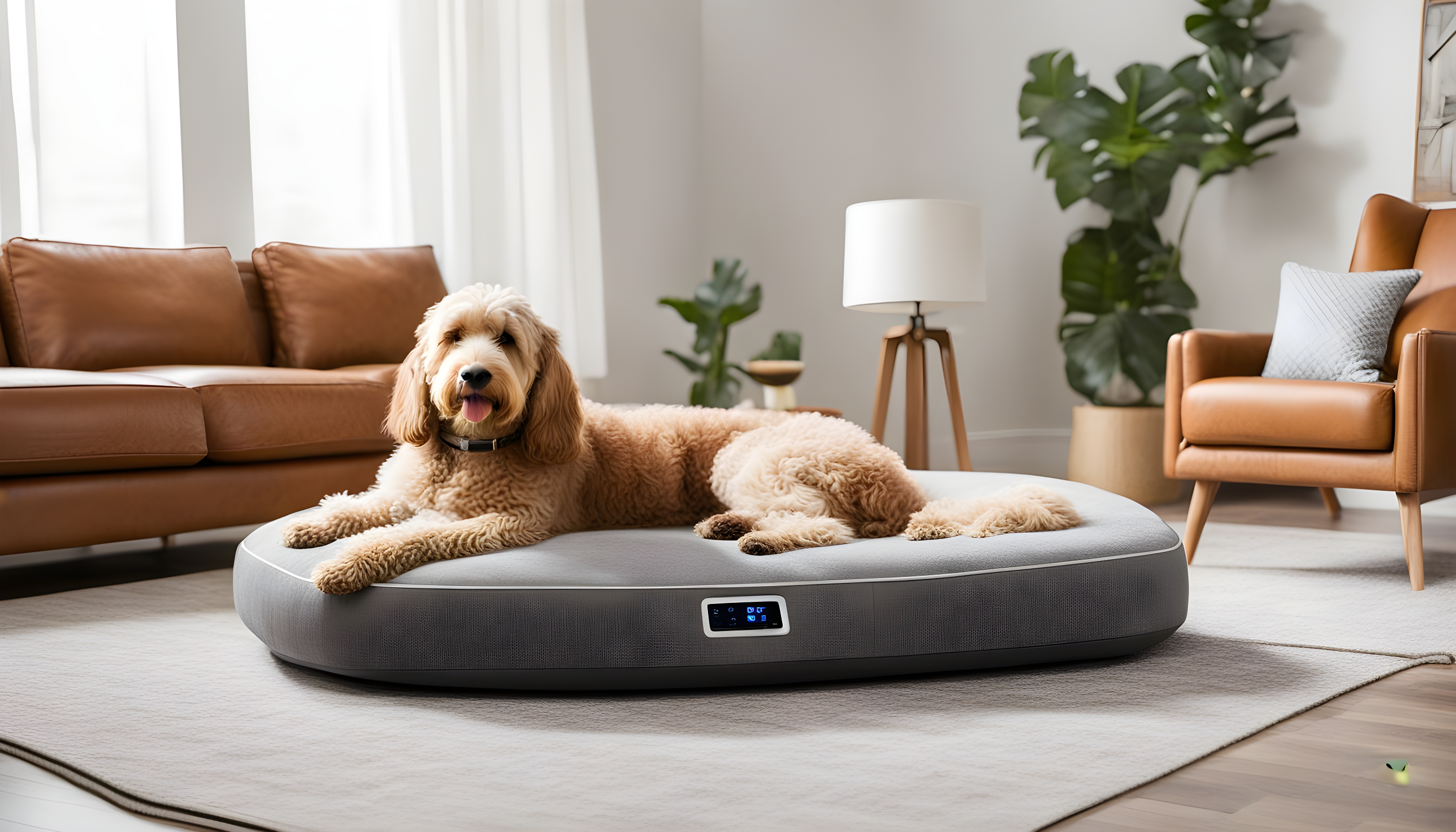
B. Practical Tips for Allergy Management: Your Hypoallergenic Toolkit
Ah, the nitty-gritty! If you're serious about minimizing allergens, here's your action plan:
1. Regular Grooming: More Than Just Pampering
We've sung this tune before, but it's worth repeating. Regular grooming is not optional; it's mandatory. From bathing to brushing, keep that furball clean!
2. Install an Air Filter: Your Allergy Safety Net
Air filters can be your best friend. Opt for a HEPA filter designed to capture pet dander.
3. Consider Non-Carpeted Flooring: Ditch the Dander Traps
Carpets are basically dander magnets. If possible, go for hardwood or tile flooring for easier cleaning.
4. Cover the Couch with a Blanket: Your Furniture's Best Friend
Pets on furniture can be cute but not so much when you're sneezing up a storm. A simple, washable blanket can serve as a barrier.
5. Restrict Access to Your Bedroom: Your Allergy-Free Sanctuary
Make your bedroom a pet-free zone. After all, you spend about a third of your life sleeping. Make it count!
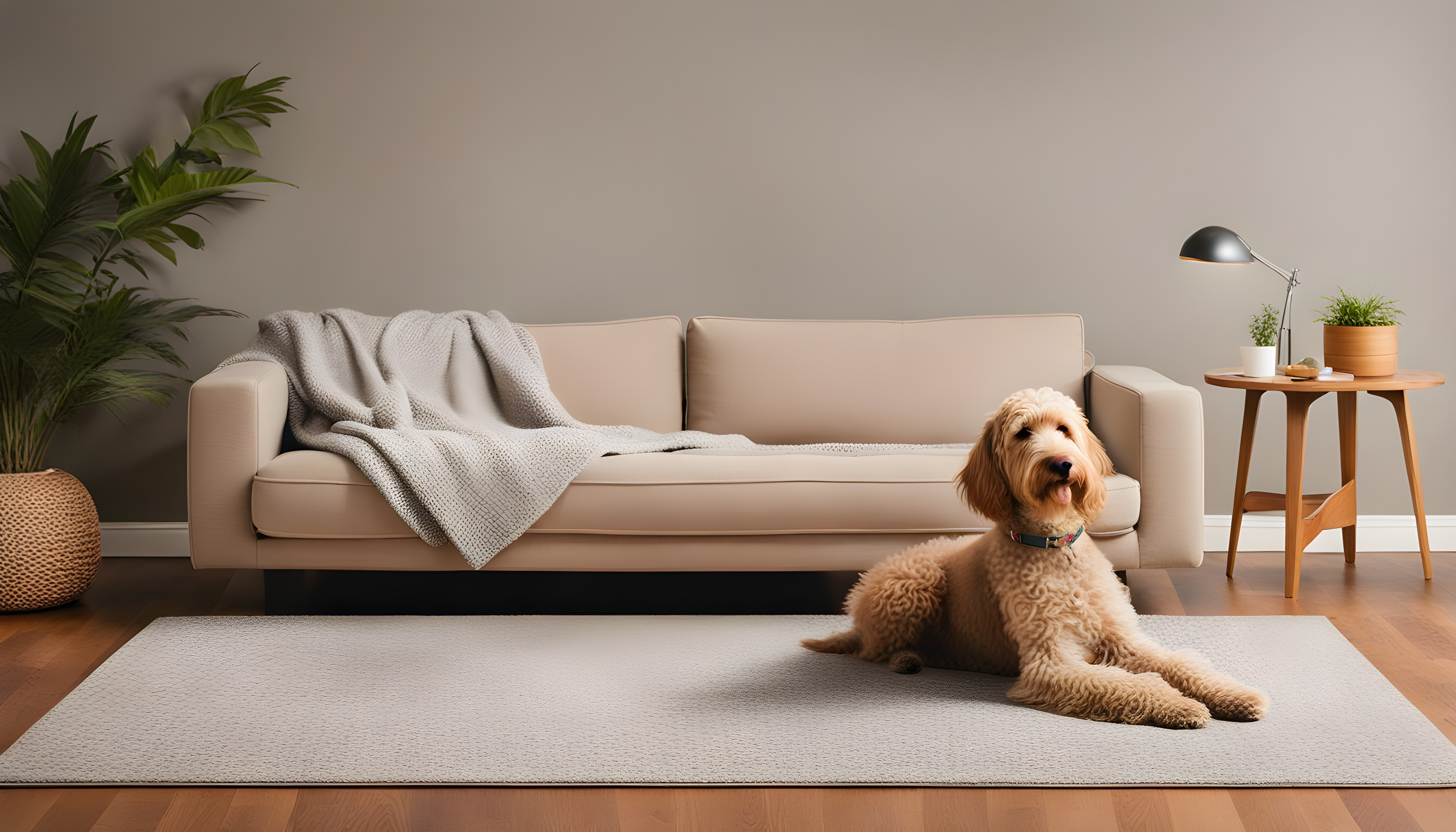
Quick Tip 🌟
Invest in washable pet bedding and throws. Not only do they make cleaning a breeze, but they also keep allergens at bay.
Product Recommendation
For an added layer of cleanliness, give our Active Dog Mushroom Bundle a try. Proper hydration can lead to healthier skin, reducing the number of allergens your Labradoodle produces.
Points to Ponder 🤔
- Your home setup can make or break your allergy management strategy.
- Simple changes like opting for hardwood floors and using air filters can significantly reduce allergens.
Related Blogs
Curious about what it really takes to live harmoniously with a Labradoodle? Dive into our blog post How Long Do Labradoodles Live for a full guide on what you should expect when bringing a new Labradoodle into your home.
So, there you have it—your all-in-one guide to living with a Labradoodle while managing allergies. Up next, let's dive into the emotional bond between humans and Labradoodles. Get your tissues ready, but hopefully, for happy tears this time! 🐾
The Emotional Connection: Labradoodles and Their Owners
A. The Emotional Perks of Owning a Labradoodle: Your Fluffy Confidant
Listen, if you're thinking Labradoodles are just about those hypoallergenic vibes, you're missing half the story. These furballs are basically four-legged therapists. Had a rough day and obsessing over whether are Labradoodles hypoallergenic? Trust me, your Doodle will sense your mood and nuzzle right up to you like a fuzzy stress ball.
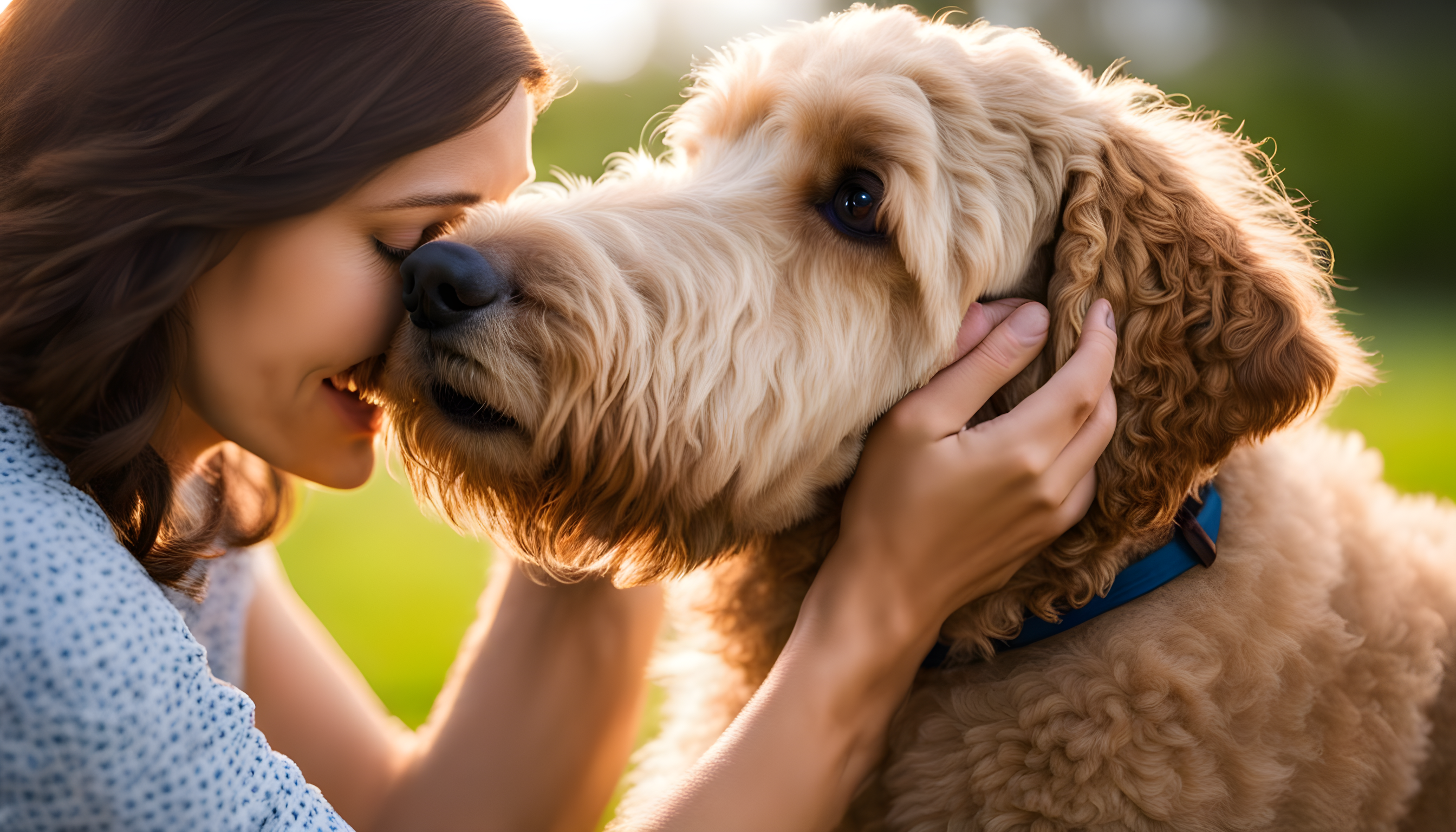
B. How Labradoodles Roll in Social Circles: They're Basically the Life of the Party!
These guys are socialites in doggo form. Imagine that friend who’s always up for a coffee date, a night out, or a Netflix binge—yep, that's a Labradoodle for you. They’re not just good with people; they're good with EVERYONE—kids, seniors, even the mailman!
C. The Labradoodle Persona: Think Jim Carrey with Fur
If Labradoodles were humans, they'd be the class clowns, the office jokesters, the comedians stealing the show. These dogs have a personality that's larger than life. You’ll find them cartwheeling through your living room one minute and giving you soulful, empathic eyes the next.

Quick Tip 🌟
Remember, a happy Labradoodle needs space to let out that boundless energy. Make sure you’ve got room for play, or you're willing to hit the dog park regularly.
Product Spotlight 🛒
For the Labradoodle that never stops, check out our Nutrition for Alpha Dogs. This supplement is basically a supercharge for your pooch's playful spirit.
Things to Chew On 🦴
- A Labradoodle isn't just an allergy-friendly choice; it's a heart-friendly one, too.
- This breed offers emotional richness that can turn any dog skeptic into a devoted dog parent.
Related Reads 📚
If this section made your heart swell, you'll want to check out our must-read Chocolate Lab Newborn Puppies. It's basically the bible for anyone looking to dive deep into the Labradoodle love affair.
So, have I got you feeling all warm and fuzzy about Labradoodles? Good, because we're not done yet! Next, we're diving into how to spoil your Doodle with top-tier care tips. Stay tuned! 🐾
Advanced Care for Labradoodles and Allergen Control
A. The Importance of Regular Check-ups: Your Dog's Bi-Annual Performance Review
Look, you wouldn't skip your annual physical, right? Same goes for your Labradoodle. Regular vet check-ups are essential for catching potential issues early on—even those related to allergen production. Your vet can offer valuable advice tailored to your Doodle's specific needs. Consider it like a bi-annual performance review, but for your dog!
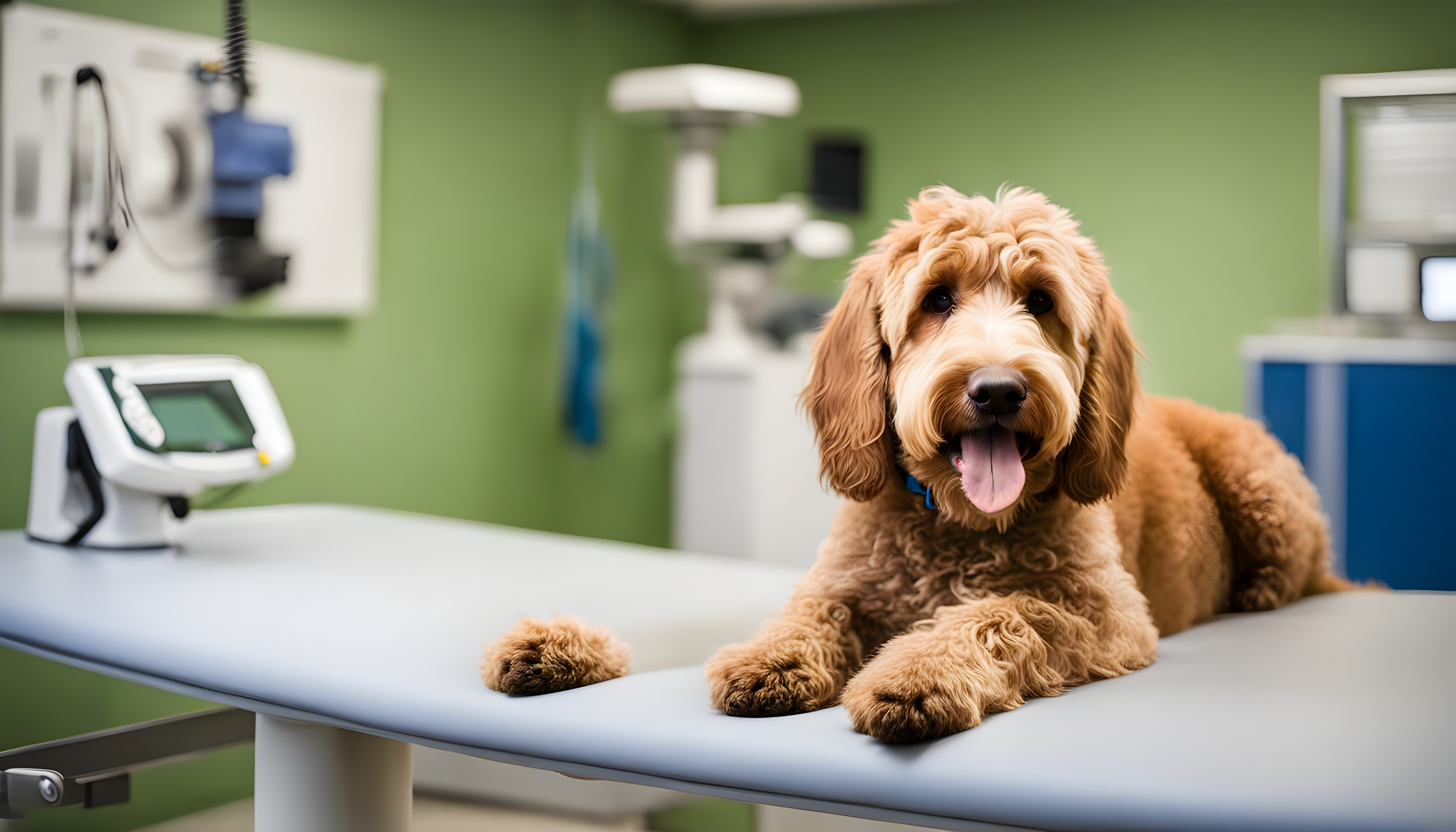
B. The Role of Diet and Health in Allergen Production: You Are What You Eat
Believe it or not, your Labradoodle's diet plays a vital role in how hypoallergenic they are. Poor nutrition can lead to dry skin, which increases dander—the stuff that makes you sneeze. So if you're still wondering are Labradoodles hypoallergenic, maybe you should also ask what they're eating. Quality food means less shedding and less dander, which means fewer tissues used. Score!
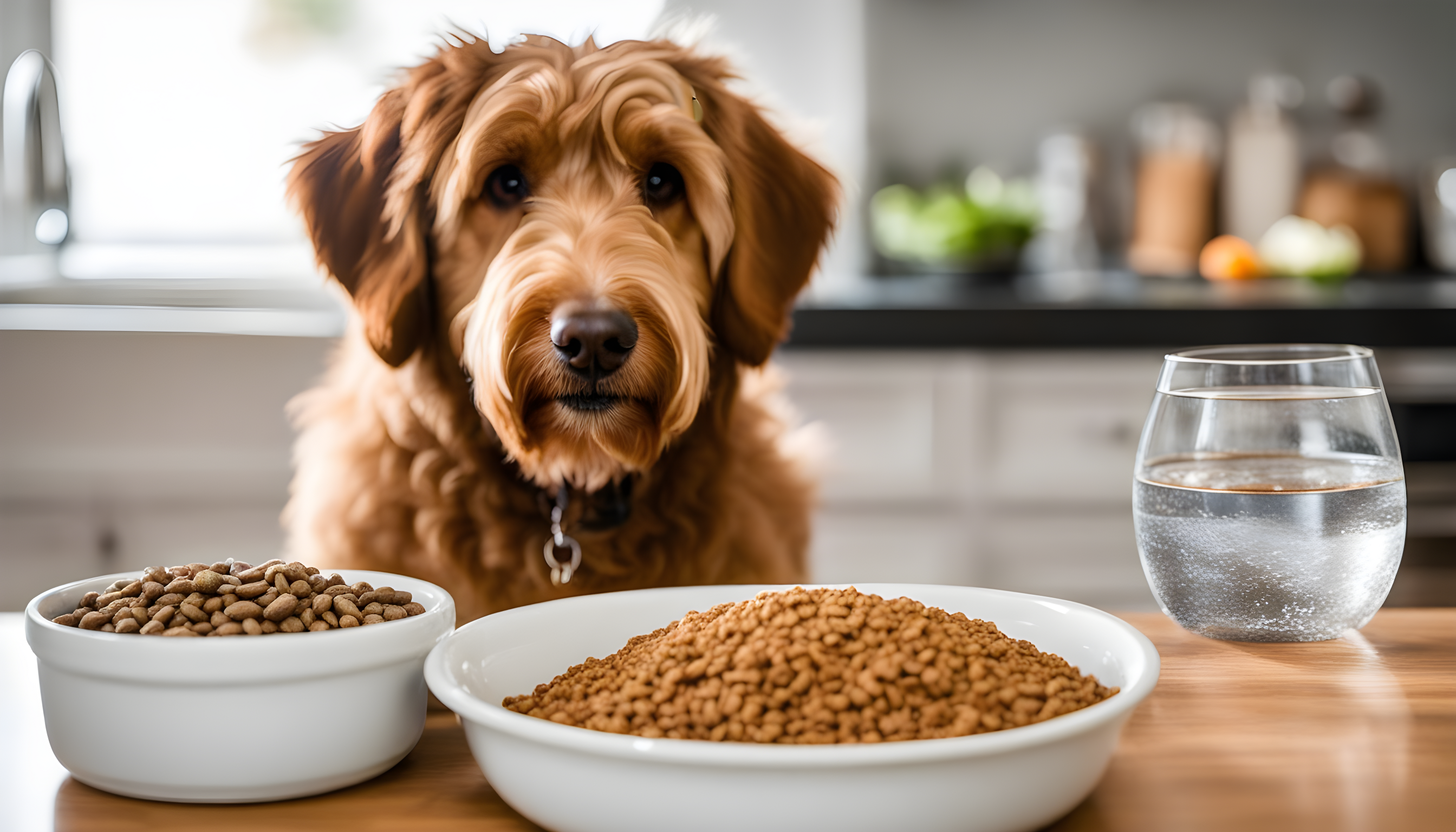
Quick Tip 🌟
Always opt for high-quality dog food with natural ingredients. Your Doodle's coat and your sinuses will thank you.
Product Spotlight 🛒
For a well-rounded diet that supports skin and coat health, consider adding our Maintenance Dog Mushroom Bundle to your Labradoodle's meals. A healthy gut often leads to healthier skin and fewer allergens produced.
Nuggets to Nibble On 🦴
- Regular vet visits can keep your Labradoodle in tip-top shape, making your hypoallergenic life easier.
- A balanced diet isn't just good for your Doodle's belly; it's also a boon for allergy sufferers.
More to Explore 📚
If you're keen on digging deeper into canine nutrition, don't miss our blog post Rottweiler Lab Mix. It's jam-packed with tips to keep your Labradoodle healthy from nose to tail.
Alright, you're almost a certified Labradoodle expert! But we've got a few more curveballs coming your way in the form of pros, cons, and alternatives. So keep those reading glasses on! 🐾
Labradoodles: Pros, Cons, and Alternatives
A. The Pros: Why Labradoodles Are Practically Perfect in Every Way
By now, you're probably convinced that Labradoodles are the bee's knees. And for good reason! They're often hypoallergenic, super trainable, and emotionally in tune with their human pals. Honestly, what's not to love?

B. The Cons: No One's Perfect, Not Even Labradoodles
Okay, let's hit the pause button on the Labradoodle love fest for a sec. They do have a few downsides. Like, you'll need to commit to regular grooming and be prepared for some high energy levels. Plus, if you're super allergic, remember: are Labradoodles hypoallergenic isn't a 100% guarantee.
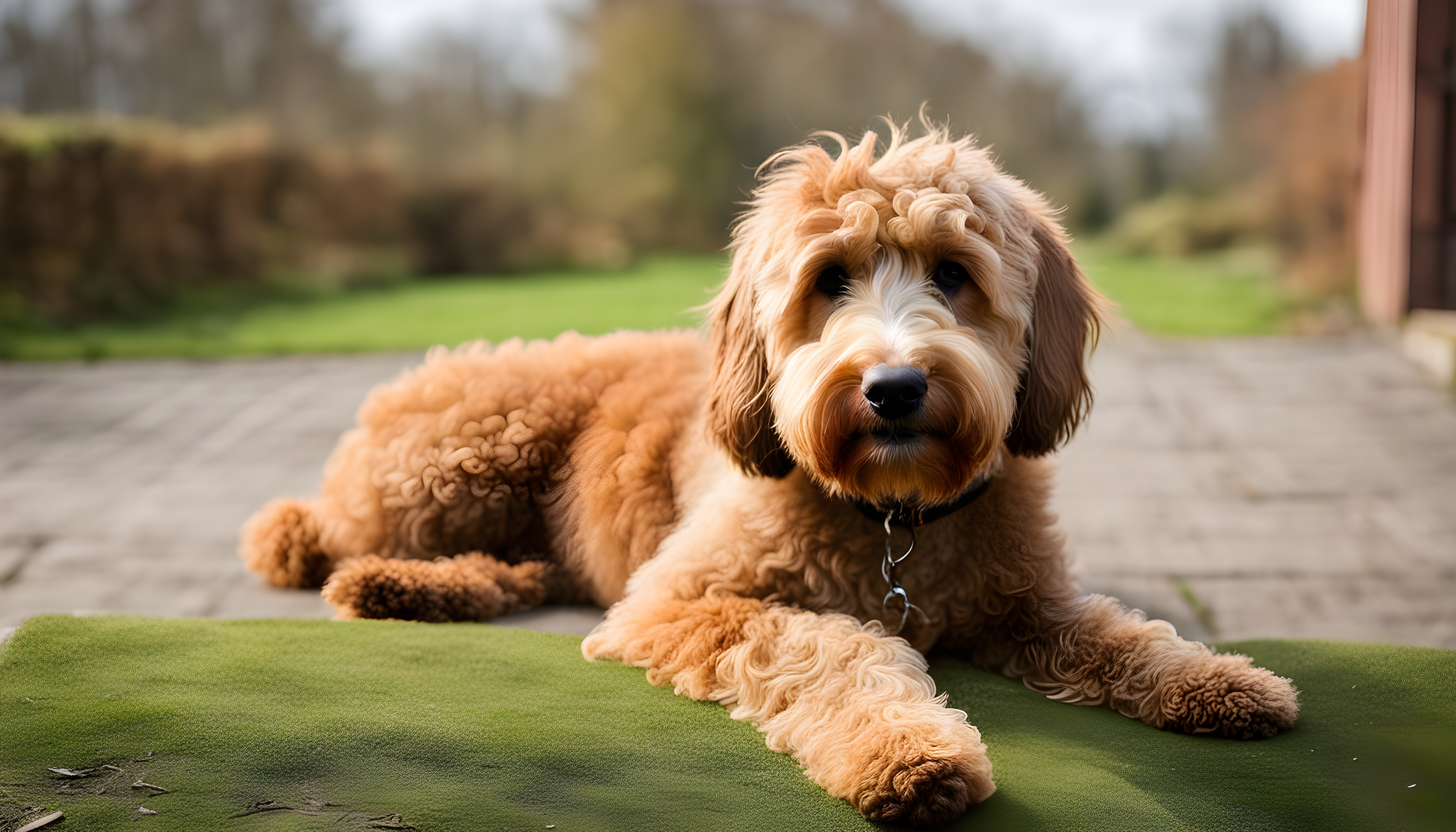
Quick Tip 🌟
Before committing to a Labradoodle, make sure you're up for the grooming and energy levels these pooches bring to the table.
Product Spotlight 🛒
If you're concerned about the grooming aspect, our Senior Dog Mushroom Bundle can make the fur management a bit easier. It's designed to support a healthy, manageable coat.
C. The Alternatives: Shop Around, Why Don't Ya?
Not 100% sold on a Labradoodle? That's cool; there are other hypoallergenic breeds out there. Poodles and Schnauzers are good options, and if you want something smaller, a Bichon Frise might tickle your fancy.

Chew on This 🦴
- Labradoodles are an excellent package deal but do come with some strings attached.
- If a Labradoodle doesn't fit your bill, there are other hypoallergenic dog breeds to consider.
Further Reading 📚
For more on alternatives to Labradoodles, take a gander at our Are Labrador Retrievers Hypoallergenic blog. It offers a plethora of options that could be your next best friend.
So, we've weighed the pros, explored the cons, and even peeked at some alternatives. You're now armed with all the info you need to make an educated choice. But wait, there's more! We've got some FAQs coming up that you won't want to miss. 🐾
Frequently Asked Questions (FAQs) about Labradoodle Allergies
| Question | Answer |
|---|---|
| Are Labradoodles Suitable for Allergy Sufferers? | Labradoodles can be suitable for allergy sufferers as they are often considered hypoallergenic due to their Poodle heritage, which is known for a low-shedding coat. However, individual reactions may vary. |
| Which Labradoodle Generation is Most Allergy-Friendly? | The most allergy-friendly Labradoodle generation is typically the F1B or later generations, as they have a higher percentage of Poodle genetics, known for low shedding and dander. |
| Do Labradoodles Have a Non-Shedding Coat? | Labradoodles have a low to non-shedding coat, particularly in generations closer to the Poodle line (like F1B), making them a good option for those with mild allergies. |
| Is Grooming a Labradoodle High Maintenance? | Grooming a Labradoodle can be moderately high maintenance. They require regular brushing to prevent matting and professional grooming every 6-8 weeks. |
| What are the Largest Breeds of Hypoallergenic Dogs? | Some of the largest breeds of hypoallergenic dogs include the Standard Poodle, Portuguese Water Dog, and Giant Schnauzer. Labradoodles, especially those with a Standard Poodle parent, can also be quite large. |
| Goldendoodle vs Labradoodle: Which is Better for Allergies? | Both Goldendoodles and Labradoodles can be suitable for people with allergies, but it often depends on the individual dog's coat type and the severity of the person's allergies. |
| Comparing F1 and F1b Labradoodles: Which is More Allergy-Friendly? | F1B Labradoodles are generally more allergy-friendly than F1 Labradoodles, as they have a higher percentage of Poodle genetics, resulting in less shedding and dander. |
| Are Male or Female Labradoodles Better for Allergic Owners? | There is no significant difference between male and female Labradoodles in terms of suitability for allergic owners. Allergy-friendliness primarily depends on the coat type and generation of the Labradoodle. |
| How Much Do Labradoodles Shed? | Labradoodles are known for their low to non-shedding coats, especially in generations that are more Poodle-dominant. However, some individual Labradoodles may shed more than others. |
| What Dog Breeds Are Considered 100% Hypoallergenic? | No dog breed is considered 100% hypoallergenic, but breeds like Poodles, Bichon Frises, and Maltese are known for being more suitable for allergy sufferers due to their low-shedding coats. |
| Can Allergy Sufferers Coexist with Dogs like Labradoodles? | Allergy sufferers can often coexist with dogs like Labradoodles, especially if the dog is from a generation with more Poodle genetics. It's important to spend time with the specific dog to gauge individual reactions. |
| What Are the Easiest to Train Hypoallergenic Dogs? | Among the easiest to train hypoallergenic dogs are Poodles, Labradoodles, and Bichon Frises, known for their intelligence and eagerness to please. |
| Do Labradoodles Shed Less Dander Compared to Other Breeds? | Labradoodles typically shed less dander compared to many other breeds, especially if they have a coat type closer to that of a Poodle, making them a better choice for people with allergies. |
| Are Labradoodles Known for Being a Calm Dog Breed? | Labradoodles are known for their balanced temperament. While they can be energetic, especially as puppies, they generally become calmer with age and proper training. |
| How Intelligent Are Labradoodles Compared to Other Dogs? | Labradoodles are generally considered highly intelligent, inheriting their smarts from both Poodle and Labrador Retriever parents, which are among the most intelligent dog breeds. |
| At What Age Do Labradoodles Typically Become Calmer? | Labradoodles typically become calmer around the age of 2 to 3 years, but this can vary with individual dogs and their training, exercise routine, and overall environment. |
| Can Labradoodles Be Comfortable Being Left Alone? | Labradoodles can be comfortable being left alone for moderate periods if they are properly trained and exercised. However, they do best with human companionship and can develop separation anxiety if left alone too often or for too long. |
| Do Labradoodles Often Experience Separation Anxiety? | Labradoodles can experience separation anxiety, particularly if they are left alone frequently or for extended periods. Proper training, socialization, and mental stimulation can help mitigate this issue. |
